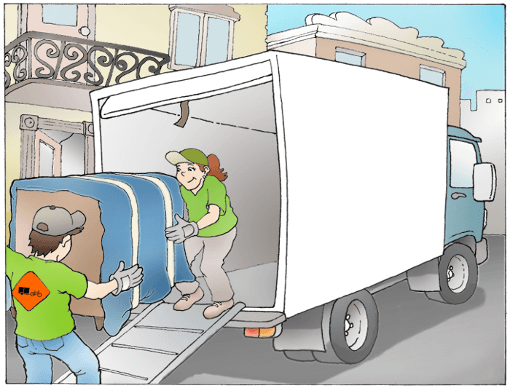Les 5 meilleurs déménageurs de Montréal en 2025
Choisir un déménageur fiable est crucial afin d’éviter que votre déménagement ne vire au cauchemar, ce qui est trop fréquent. Il existe des centaines d’entreprises de déménagement à Montréal, incluant la Rive-Sud, la Rive-Nord et Laval, et on retrouve sur Internet des milliers d’histoires de clients lésés.
C’est pour vous aider à faire un choix éclairé que nous avons compilé ce palmarès, que nous mettons régulièrement à jour. Sur les centaines d’avis que nous avons analysés, les plaintes les plus fréquentes sont de loin les bris non dédommagés et l’inefficacité des déménageurs, suivies par l’attitude déplacée des employés, les frais cachés et les retards. Méfiez-vous notamment d’un taux horaire attrayant, qui pourrait au final vous coûter cher en surfacturation et en réparations.
Comment éviter de se faire avoir ?
Le bouche à oreille peut être un bon point de départ, mais souvent la qualité de service n’est pas uniforme dans une même entreprise. Plusieurs sites conseillent d’appeler quelques entreprises et de leur poser une liste de questions pour vérifier leur fiabilité. Le hic c’est que les déménageurs peu scrupuleux vous répondront ce que vous souhaitez entendre.
Sur d’autres sites on vous conseille certaines entreprises, mais sans mentionner comment elles ont été sélectionnées. Ce sont bien souvent des publicités déguisées. Il existe aussi des sites où l’on peut remplir un formulaire pour recevoir des estimations de plusieurs compagnies, mais leurs partenaires sont sélectionnés de manière arbitraire.

Selon nous il n’y a qu’une seule manière de faire un choix éclairé : se baser sur les avis laissés par des clients sur le net. Plus la moyenne d’une entreprise est élevée, plus on peut être confiant qu’elle se soucie de ses clients.
Il peut bien sûr arriver qu’une entreprise triche en demandant à des proches de laisser de faux témoignages, mais une compagnie peu scrupuleuse ne pourra éviter de recueillir de mauvais avis et ne pourra donc pas maintenir une moyenne élevée.
Les déménageurs les plus fiables
Voici donc la liste des meilleurs déménageurs de Montréal, incluant la Rive-Sud, la Rive-Nord et Laval. Certains d’entre eux sont des perles qui échappent à des recherches rapides, car ils sont listés après une multitude de concurrents plus ou moins recommandables.
Bon magasinage !
| Entreprise* | Avis Google | Note Google | Avis Facebook | Note Facebook | Nombre total | Moyenne pondérée |
|---|---|---|---|---|---|---|
| Déménagement Excellence | 237 | 4.9 | 30 | 4.9 | 267 | 4.9 |
| Déménagement Sympathique | 595 | 5.0 | 99 | 5.0 | 694 | 5.0 |
| Déménagement Le Capitaine | 122 | 4.8 | 122 | 4.8 | ||
| Déménagement Puissance | 606 | 5.0 | 149 | 4.9 | 755 | 5.0 |
| Déménagement Intact | 497 | 4.7 | 67 | 4.7 | 564 | 4.7 |
| Entreprise* | Avis | Moy. |
|---|---|---|
| Déménagement Excellence | 267 | 4.9 |
| Déménagement Sympathique | 694 | 5.0 |
| Déménagement Le Capitaine | 122 | 4.8 |
| Déménagement Puissance | 755 | 5.0 |
| Déménagement Intact | 564 | 4.7 |
Pour un déménagement longue distance, que ce soit au Québec ou dans une autre province du Canada, Déménagement Total est une autre excellente entreprise à considérer. Pour un déménagement dans la Couronne Nord de Montréal, vous serez entre bonnes mains avec Déménagement EBL.
* Pour faire partie de ce palmarès, les entreprises doivent avoir une moyenne d’au moins 4.5 étoiles sur au moins 100 avis laissés sur Google et Facebook. Elles doivent aussi contribuer financièrement à la campagne publicitaire donnant de la visibilité à ce palmarès. Si votre entreprise se qualifie et que vous aimeriez qu’elle y apparaisse, veuillez nous contacter à info@myette.ca.
Dernière mise à jour : 9 juillet 2025
